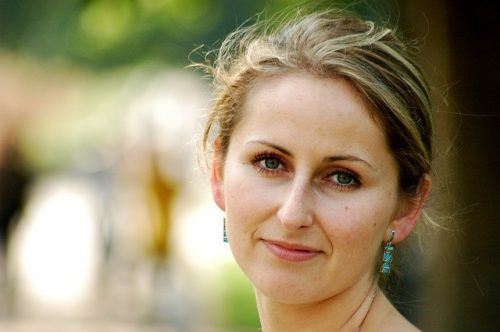Portrait photography tips: Posing
Unless you’re working with a professional model, don’t pose your subject. Chances are you’ll be shooting friends and family with your new Sony a7R V from Beachcamera.com, so making them pose is just going to make them feel nervous and look awkward. Also, if you’re not a seasoned portrait photographer, you probably don’t know how to master portrait photography and don’t know how to pose correctly anyway. But there are a few things that’ll make your subject feel comfortable, happy and relaxed which makes for a better shot. By giving the subject something to focus on, they’re visibly more relaxed and create a more natural pose. You’re going hear 'What do I do with my hands?' A LOT. This is when their nerves will spike, and that makes for a bad photograph. To remedy this, give them something to do. They could thumb through some old photos, or play with some jewelry they’re wearing. Pockets are a great way to hide fidgety fingers, just avoid shooting your subject straight-on unless you’re going for that rock star look.

Portrait photography tips: Lighting
Want to know how to get better at portrait photography? Get better with your lighting! Natural light is the simplest and quickest way to light your portrait subject. An easy way to get good lighting for your subject is to use a window. You’ll find soft light outside on an overcast day, in shade or through north-facing windows with no direct sun. Hard light is means direct sunlight– whether the model is inside or outside. It's best to avoid hard light when learning how to get better at portrait photography. It’s more difficult to control, and gives extremes in brightness, from cavernous black shadows to white-hot highlights. Hard light accentuates skin texture and casts unflattering, sharp shadows. It’s difficult to get a good exposure in harsh, direct sunlight. Shadows are too dark and highlights too bright – plus the subject will likely squint if looking towards the sun. The key to perfect portraits is to capture the light and the shadows with your Nikon D850 from Beachcamera.com. A great, quick portrait set-up goes something like this. Place your subject in front of the window and shoot them side-on from a distance.

Portrait photography tips: Color
Clothing and styling makes a big difference to how your portrait looks. For a classic, timeless approach use neutral and earth tones such as browns, greys, whites and blacks. To give your portrait more punch look for splashes of vivid color such as bright clothing, make-up or colorful backgrounds. However, avoid mixing all three options unless you feel confident behind the camera. This tricks the camera into reproducing accurate colors because all of these light sources look different. Sunlight is middle toned, shade is bluer and light bulbs are more orange, so your Sony digital camera compensates by shifting its white point. If you’re not sure whether things look good or not, make sure you’re shooting in RAW file format and change it when editing later as you learn how to master portrait photography.

Portrait photography tips: Camera settings
If the best friend of the beginner portrait photographer is aperture, the enemy is shutter speed. Aperture controls depth of field– how much of the scene is in focus. An aperture of f/16 will make almost everything sharp from foreground to background. Whereas an aperture of f/1.4 means only a small slice will be sharp, with the rest falling into a creamy blur. There’s no right or wrong way to use aperture when learning how to master portrait photography. If the surrounding environment is as important as the subject, go narrow (f/8, f/11, f/16). Or if your subject is the most important thing, or perhaps the background is distracting then use a wide aperture (f/1.4, f/2.8, f/3.2). Shutter speed determines whether motion is blurry or not. A fast shutter speed (1/1000 sec) is so short that even subjects in motion are frozen. Whereas a slow shutter speed (1/10 sec) will incur some blurring if either the camera or subject is moving. The camera’s shutter speed has to be fast enough not to blur your subject so keep the number the same as the focal length of your lens when learning how to master portrait photography. ISO should be set accordingly to expose your image enough to get a clear view of your subject. Modern DSLRs and mirrorless cameras can handle high ISO noise quite well, so you shouldn’t fret over how high your ISO is getting.

There’s no one perfect way to capture a portrait. It will always vary from picture to picture. However, these tips will help you learn how to master portrait photography.








































